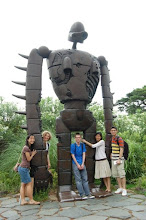 Features I really liked and why
Features I really liked and why: The "Today's Most Popular" section on the homepage lets users see what the community is currently looking at, which I like. It not only allows visitors to gage what content is new, but also what may be relevant in terms of mass-appeal.
As with last week, I enjoyed the "Captured" section, and look forward to seeing what kind of art and daily life gets captured and sent to this site.
What's not working with the site: The Web site doesn't update as frequently with its same print stories. It updates with other content, but not necessarily the content in its next issue, which is a little troublesome from the perspective of needy readers who have to wait for the actual print publication before partaking.
What's not there that I'd like to see: I'd like to see more color. The Web site does an excellent job of maintaining Interview's aesthetic, however, that sam
e aesthetic looks funny on a 24" iMac screen where colour has such an opportunity to be so much more dynamic and engaging.
How the competitors' sites compare: W Magazine and V Magazine have very similar Web site layouts, including, to a certain extent, editorial content. That is, not the content itself, per say, but the themes presented and entertained weekly. That said, W offers updates to its blog list, which are written regularly. Interview also features blogs, but they seem to updated less frequently.
V also regularly updates its blogs and features a sleek layout that I appreciate more now. It offers an engaging slideshow of stories, as well as micro-snapshots of current blog and other articles.
Vanity Fair's Web site is updated the most frequently, perhaps, of all four publications and includes content from last night's Grammy Awards. The site itself, however, appears too busy, with too much flashing content and left-hand navigation sections which dilute the experience somewhat.
Each of the competitor magazines displayed an in-frame popup window asking to purchase its magazine. Generally, this is annoying as I may already subscribe to the Web site and don't need to be reminded I payed money for a shitty online experience. The only reason these companies should have this interference is if it's an actually-lucrative feature. If not, take it down!



